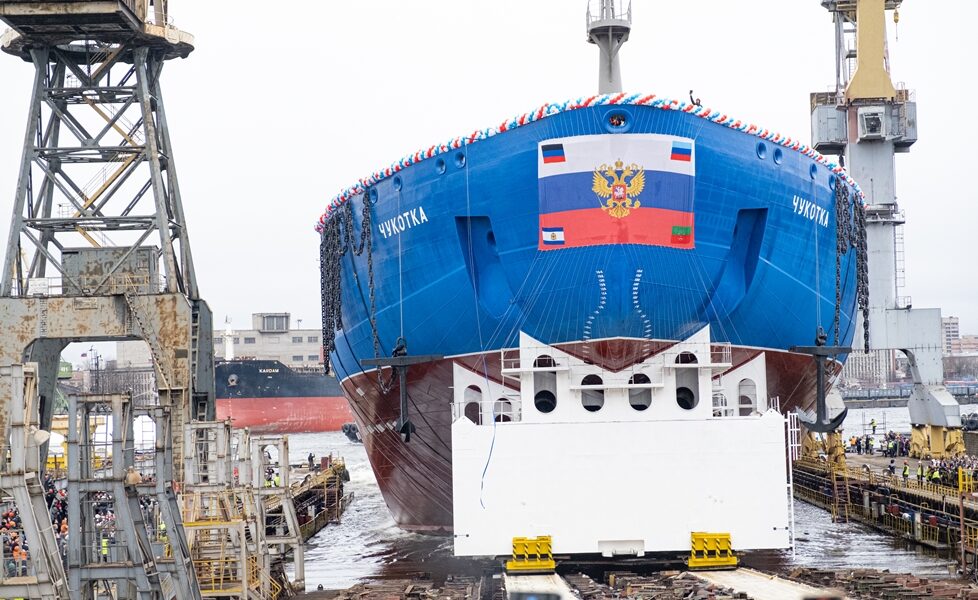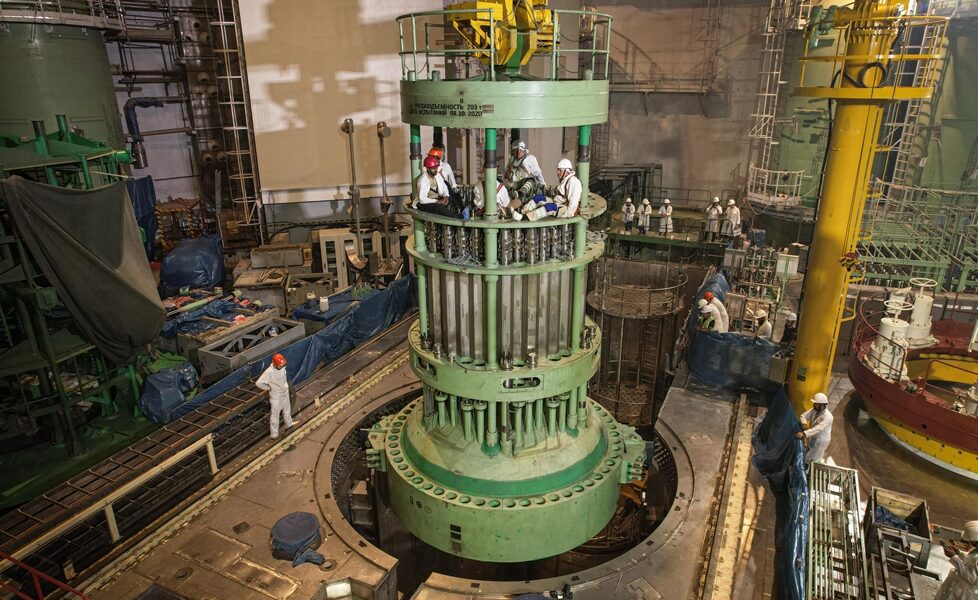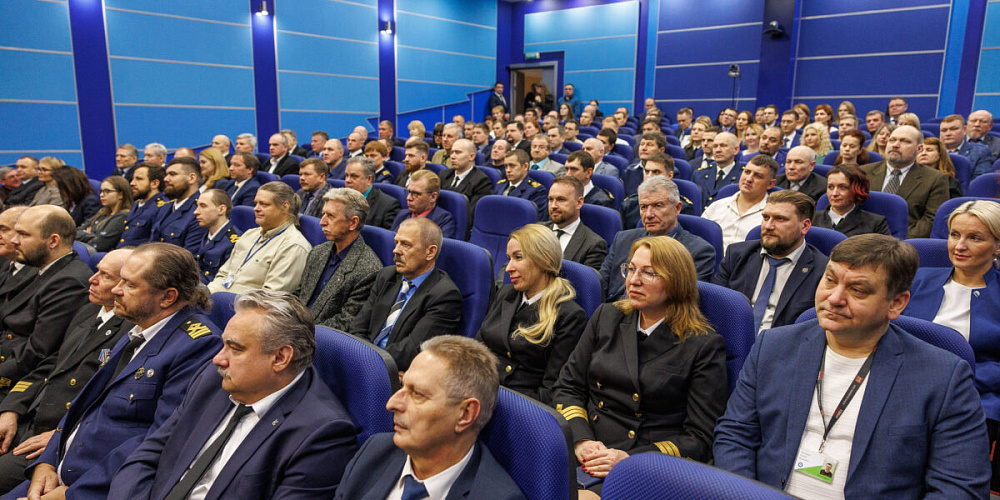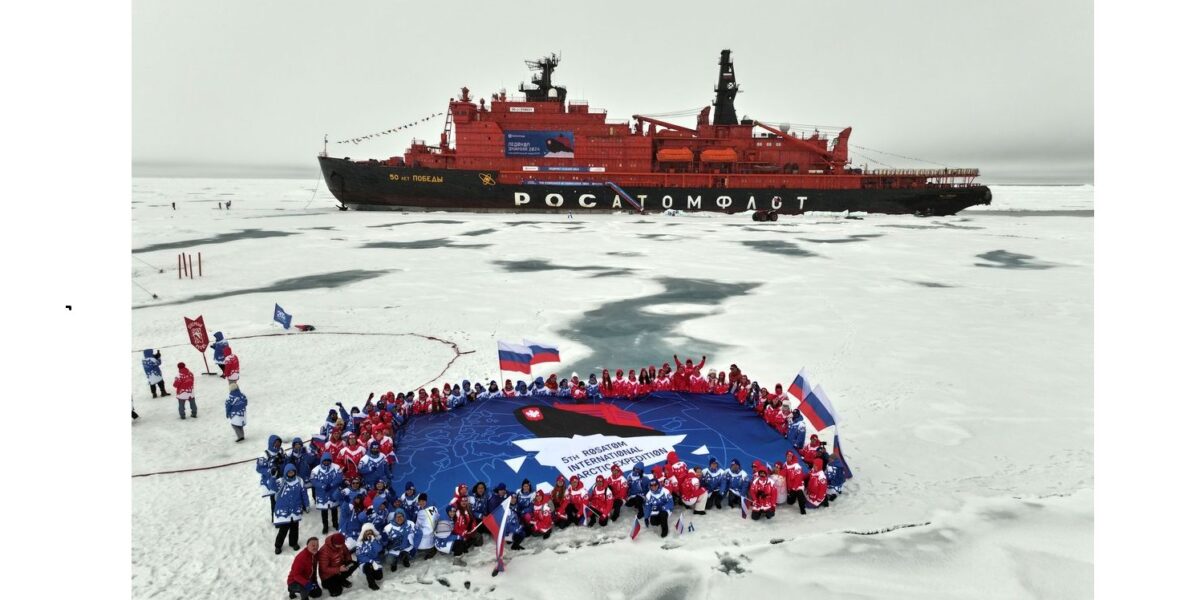Alexey Likhachev, the head of Rosatom, attended the launching ceremony of the fourth serial nuclear icebreaker, Chukotka, at USC Baltic Shipyard JSC in St. Petersburg on November 6.
President of the Russian Federation, Vladimir Putin, ordered the launch of the vessel via videoconferencing. He noted that the creation of such powerful vessels demonstrates Russia’s industrial, scientific, HR, and technological capabilities. “That’s right – our entire domestic economy should be built on our own technologies and groundbreaking scientific solutions. I want to stress again: our plans to develop the Arctic and increase cargo traffic on the Northern Sea Route (NSR) depend directly on strengthening our icebreaker fleet. As you know, we have big ambitions there, and there’s a lot of work to be done,” the Russian President said.
“New icebreakers are essential for the development of the NSR and the entire Russian Arctic. In the past 10 years, cargo traffic along the route has grown nearly tenfold and continues to set new records every year. This year, we’re seeing the same upward trend, with cargo traffic exceeding last year’s figures for the same period. Transit traffic is also increasing due to cargo redirection from west to east. So far this year, over 3 million tons of cargo has been transited, which is a 40 % increase from last year,” said Alexey Likhachev.
When an icebreaker is launched, it traditionally undergoes a “christening” where a bottle of champagne is smashed against the vessel’s stem, symbolizing its first encounter with a sea wave.
Elena Shmeleva, the head of the Talent and Success Foundation, has become the “godmother” of the vessel: “I’m highly honored to be the “godmother” of the Chukotka icebreaker. Today, these vessels do not only ensure year-round navigation in the northern latitudes and deliver cargo to the most remote regions. They are also essential for scientists, including those from Sirius, to explore the Arctic. For instance, our university’s team has just returned from a 45-day Arctic expedition, where they researched the impact of permafrost on changes in carbon levels in the seas. They have also brought a large number of soil and water samples for further analysis. I would like to see the icebreaker’s research function develop further. This is crucial for Russia’s scientific and technological development strategy, which prioritizes Arctic exploration.
After the launch, construction of Chukotka will proceed in the water, with hull sections and machine-building components being fabricated. It is expected to be commissioned in 2026.
Reference
Seven nuclear icebreakers are currently operating in the Arctic, including Arktika, Sibir, Ural, Yamal, 50 Let Pobedy, Taimyr, and Vaigash. At the same time, three more icebreakers are under construction at Baltic Shipyard JSC. The flag-raising ceremony and commissioning of the serial universal nuclear icebreaker Yakutia is scheduled for the end of the year. In January, Russian President Vladimir Putin was present for the laying down of the serial universal nuclear icebreaker Leningrad. The serial universal nuclear icebreaker Chukotka has already been launched and work is ongoing at the Zvezda plant on the Rossiya icebreaker of Project 10510 Lider.
Chukotka is the fourth icebreaker in the Project 22220 series, with a top ice class of Icebreaker 9. It is being built at the Baltic Shipyard JSC and has a special feature – it can change its draft to enter river mouths and shallow waters. The serial universal nuclear icebreaker Chukotka was laid down in 2020 and already has RITM-200 reactors and nearly all main equipment onboard.
The Northern Sea Route (NSR) is the shortest shipping route connecting the western part of Eurasia and the Asia-Pacific region. Administratively, the NSR begins at the border between the Barents and Kara Seas (Kara Gate Strait) and ends in the Bering Strait (Cape Dezhnev). The route is 5.6 thousand km long. The NSR passes across the seas of the Arctic Ocean (Kara, Laptev, East Siberian, Chukchi). The NSR serves the ports of the Arctic and major rivers of Siberia. Today, there are six major seaports in the NSR waters in the Russian Arctic: the port of Sabetta, the port of Dikson, the port of Dudinka, the port of Khatanga, the port of Tiksi, and the port of Pevek.
In 2018, the Russian Government appointed Rosatom the infrastructure operator of the Northern Sea Route (NSR). Rosatom oversees the federal project "Development of the Northern Sea Route" and also participates in the Northern Sea Route development plan until 2035 and the initiative for the socio-economic development of the Russian Federation until 2030 "Year-Round Northern Sea Route", approved by the order of the Russian Government.
One of Rosatom’s strategic goals is to make the NSR an effective transport artery linking Europe, Russia and the Asia-Pacific region. In the pipeline is a federal project to develop the Great Northern Sea Route – a transport corridor from St. Petersburg and Kaliningrad to Vladivostok.





